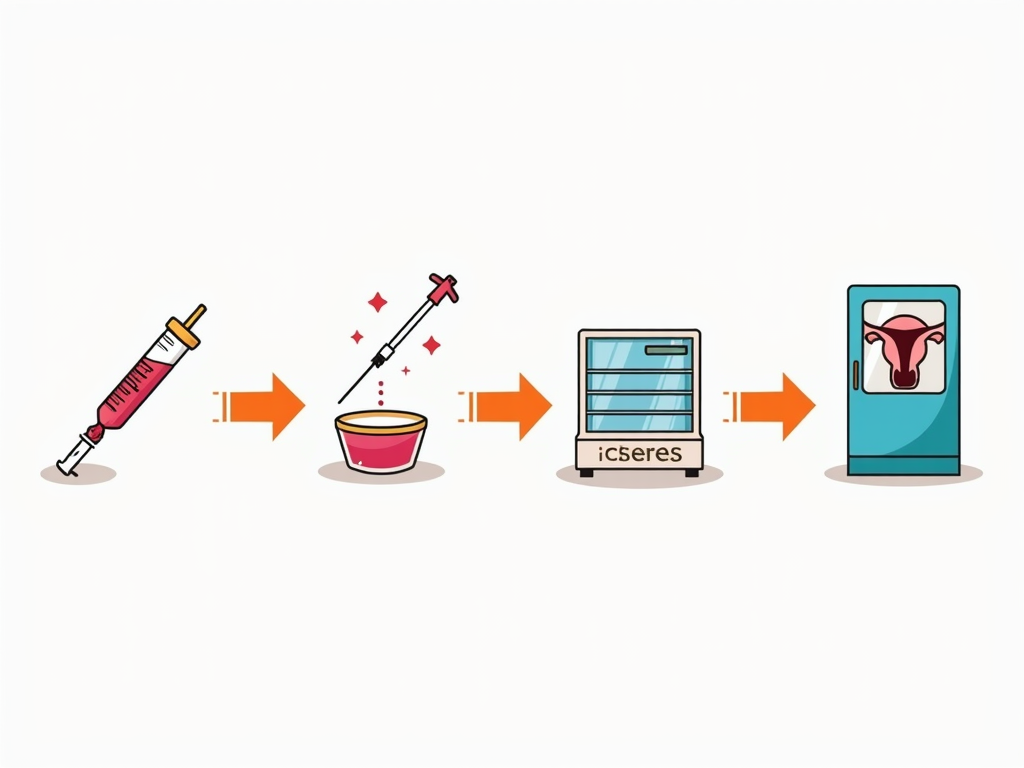Understanding IVF: Steps and Success Rates
March 9, 2025, 8:33 a.m.
Overview
In Vitro Fertilization (IVF) is a popular fertility treatment that helps people build families when natural conception isn’t an option. This article breaks down the IVF steps and explains what affects success rates, offering hope and guidance.
What is IVF?
IVF is a process where doctors fertilize an egg with sperm outside the body, then place the embryo into the uterus. It’s a lifeline for many facing infertility—whether it’s unexplained infertility, female infertility, or other issues. Couples often turn to IVF after trying other methods without luck. It’s not a quick fix, but it’s a powerful tool that’s helped millions become parents.

The Steps of IVF
IVF isn’t one simple procedure—it’s a series of steps that take weeks to complete. Here’s how it works:
-
Ovarian Stimulation: You start with hormone shots to help your ovaries produce multiple eggs. This lasts about 10-14 days. More eggs mean better odds later on.
-
Egg Retrieval: When the eggs are ready, a doctor uses a thin needle to collect them from your ovaries. You’re sedated, so it’s not too uncomfortable—just a quick outpatient visit.
-
Fertilization: In a lab, the eggs meet the sperm. Sometimes they’re mixed together; other times, a single sperm is injected into an egg. This depends on your situation.
-
Embryo Culture: The fertilized eggs grow into embryos over 3-5 days. Experts watch them closely to pick the healthiest ones.
-
Embryo Transfer: Finally, the doctor places one or more embryos into your uterus. It’s a simple process—no anesthesia needed—and then you wait to see if it works.

Success Rates of IVF
How likely is IVF to work? It depends. Age is a big factor—younger women usually have better chances. The reason for infertility matters too, like unexplained infertility or female infertility from blocked tubes. Clinic quality also plays a role.
Here’s a quick look at average success rates (live births per cycle):
| Age Group | Success Rate |
|---|---|
| Under 35 | 40-50% |
| 35-37 | 30-40% |
| 38-40 | 20-30% |
| Over 40 | 10-20% |
These numbers show why timing and planning matter. Unexplained infertility and IVF success can vary, but it’s often a solid option when answers are hard to find.

Personal Experiences with IVF
IVF is more than medical steps—it’s a personal journey. Take Sarah, a 34-year-old who faced unexplained infertility. After two failed cycles, she felt defeated. “You ride this wave of hope and fear,” she said. On her third try, she welcomed a daughter. Then there’s Mark and Lisa, who dealt with female infertility due to endometriosis. Their first cycle worked, but the stress was real. “We leaned on each other and our doctor,” Mark shared. These stories show IVF’s highs and lows—and why support matters.

What Affects IVF Success?
Success isn’t guaranteed, but some things help. Age tops the list—under 35 is ideal, though many over 40 succeed too. The cause of infertility—like unexplained infertility or low sperm count—changes the odds. Clinic expertise is huge; top ones often report better results. Lifestyle counts too: smoking cuts your chances, while stress can weigh you down. Even with unexplained infertility and IVF success, every cycle teaches you something new.

Tips to Boost Your IVF Chances
Want to improve your odds? Try these:
- Live Healthy: Eat well, exercise, and skip smoking or heavy drinking. A fit body supports the process.
- Pick a Great Clinic: Look at success rates and reviews. A good team makes a difference.
- Stay Supported: Talk to loved ones or join a group. IVF can feel lonely without a cheer squad.
Small changes add up. For infertility challenges like unexplained infertility, these steps can tip the scales.

Common Questions About IVF
People often ask: Does it hurt? Not much—egg retrieval is the toughest part, but sedation helps. How long does it take? About 4-6 weeks per cycle. Can it fix all infertility? No, but it tackles many issues, from female infertility to unexplained cases. Knowing what to expect keeps you grounded.

Summary
IVF offers a path through infertility, blending science with personal strength. Understanding IVF: Steps and Success Rates means knowing the process, the odds, and how to prepare. It’s not easy, but with the right support and choices, it’s a journey worth taking. Check out the readings below for more.